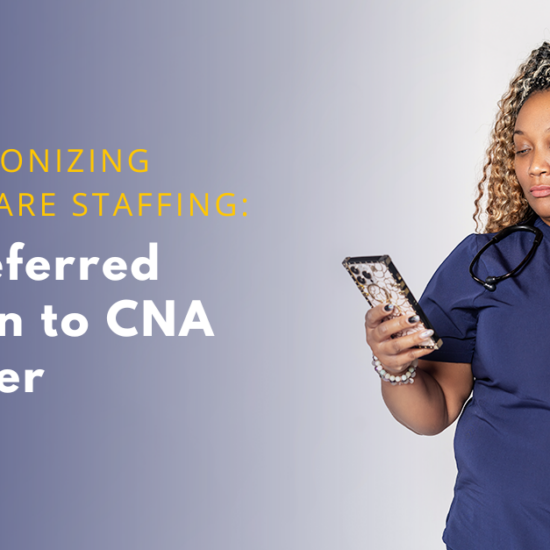5 Nurse Staffing Mistakes to Avoid in 2023
5 Nurse Staffing Mistakes to Avoid in 2023 for Cost Savings & Better Patient Care
As we inch closer to 2023, many healthcare organizations are in deep planning mode for the year ahead. And one thing that is likely tops their list of priorities is cost savings. While this is a key area of focus for hospitals, it’s been a particularly relentless one for senior care companies, who have long struggled to attract and retain workers.
Both entities lost a significant portion of their staff during the pandemic and had to swiftly pivot their operational strategy, either bringing in agency workers to fill gaps, limiting services or reducing their occupancy.
On top of that, the proposed federal staffing standard would add yet another layer to these challenges. According to data from accounting and consulting firm CliftonLarsonAllen in partnership with AHCA, the 4.1 HPPD minimum would require 94% of nursing homes to increase staffing levels just to be in compliance.
All the above, plus the rising cost of inflation, spells trouble and uncertainty in the year ahead. And while certain areas like the rising price of medical supplies and CPPD, are out of their control, smarter staffing practices can provide some much-needed relief. And now that the pandemic is winding down, providers can take a step back and assess some of the practices they may have resorted to and built habits of while in crisis mode over the past two plus years. By avoiding the following staffing faux pas, they can see increased staff satisfaction, cost savings and better patient and resident care.
Mistake #1: Not Adjusting Staffing Based on Patient Needs & Volume
This is likely one of the habits picked up during the pandemic, when hospitals and facilities were scared, scrambling and doing whatever necessary to scrape by. However, failing to monitor and alter staffing based on patient load and the level of care needed is a huge missed opportunity when it comes to cost savings.
Making this practice part of your daily staffing strategy has been linked to several other benefits. Research finds that by considering the acuity of patients and adjusting staffing accordingly, health systems “can utilize the staff appropriately to provide the best care possible while being fiscally responsible. This can improve patient outcomes and overall staff satisfaction.”
The report continues, “Nurses can have a positive or negative impact on patient outcomes. When they are stretched too thin, cannot provide the best care to their patients. Acuity-based staffing is a way to mitigate this problem.”
Adjusting staffing can help you keep tabs on the care levels needed for each patient while ensuring that staff have the support they need to provide that care. This can help keep burnout at bay.
Mistake #2: Using a Master Schedule with Built-in Overtime
When was the last time you looked at the template you use to build the staff schedule? This may be the same template you’ve been using for months or even years. Many organizations blindly build overtime into their master schedule, often unaware of the effect it’s having on their bottom line. This is another area that often gets overlooked but is a quick adjustment that can lead to significant long-term savings.
While rearranging things can requires some work on the front end, the effort is always worth it. Start by making sure your full-time, part-time and PRN staff are working to their max capacity (ie. 40 hours/week for full-timers) without going into overtime. If this means you have some open shifts as a result, you can approach your part-time and PRN staff to see if they are willing to switch to full-time positions. Their circumstances might have changed since you last discussed their availability. Next, prioritize the positions and shift times you hire for based on your schedule gaps.
The goal is to have no overtime on the posted schedule. This gives you some wiggle room since it’s inevitable that call-offs and changes in acuity and occupancy will occur throughout the week.
Mistake #3: Not Instituting a Proper Call-off Plan
Speaking of call-offs, while healthcare organizations encourage employees to avoid them, life happens. People get sick, experience car issues and must attend to urgent personal issues when they arise. Whatever the reason, providers can do very little to prevent the dreaded staff call in. However, they can take back some control by having a solid plan in place when they do occur.
Rather than calling down a list of employees, identify a group of people that are willing to pick up extra shifts, ideally without incurring overtime. Possibly these are your part-time workers who have expressed interest in more shifts but do not want to commit to full-time status.
If those people are unavailable, your default might be to turn to your hardworking, full-time staff members that always swoop in to save the day. However, doing so puts these folks at risk of burning out which is detrimental to their health and can compromise patient and resident care.
And instead of using traditional agency workers (more on why this is never a good idea below), partner with an on-demand healthcare marketplace. That brings us to mistake #4.
Mistake #4: Resorting to Traditional, Costly Agency Workers
Agency workers do not have the best reputation, especially in the skilled nursing and senior living industries. Not only are they extremely expensive, but they have been known to compromise care and staff satisfaction. Unlike full and part-time staff, they aren’t aware of the ins and outs of the community, specific resident needs and the team dynamic.
While many organizations had no choice but to turn to agencies throughout the pandemic, this trend appears to be dissipating. Still, the labor shortage persists and there will be times when you can’t fill shifts internally. Fortunately, healthcare marketplaces like Nurse Dash are changing how providers view last-minute replacements.
NurseDash thoroughly vets each clinician – via background screenings and credential and license monitoring — and makes the information public on each candidate’s profile. This transparency ensures you select the right fit your community each time.
Plus, providers get direct access to motivated and experienced healthcare workers at a fraction of the cost of agency – approximately a 30% cost savings. And, when you do find that perfect fit, there are no placement fees or long-term commitments required to offer a candidate a full-time position.
Mistake #5: Failing to Offer Flexible Staff Schedules
Finally, flexibility is key to attracting and retaining top talent in any labor market, but especially in today’s where workers have plenty of options. In fact, new data from National Investment Center for Seniors Housing & Care (NIC) suggests that offering specifically nurses flexible hours is critical to retention.
Regularly check in with staff members to make sure that their schedule is meeting their needs. Many workers, particularly nurse aides, have multiple jobs or are pursuing a degree so you want to be able to support their work-life balance as best possible. The demands and priorities of people’s personal lives frequently change and the simple gesture of checking in shows your care about employees’ wellbeing. Plus, giving staff a say in their schedules will be critical when competing with the likes of Uber and other self-scheduling work options.
While this practice will likely leave you with a few open shifts you can’t fill internally, NurseDash is here to support your staffing needs. Not only can you use our platform for last-minute call-offs, but you can book our talent months in advance – for example, when one of your hardworking nurses will be enjoying that much-deserved vacation. Contact our team now to get started and prepared for 2023.






